#lagunabeachseo
Photo
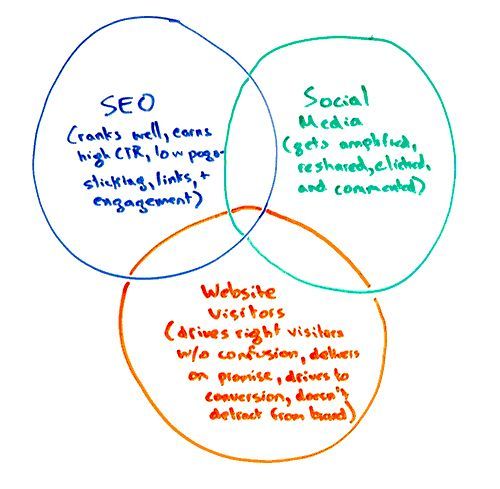

Writing Headlines that Serve SEO, Social Media, and Website Visitors All Together - Whiteboard Friday
Posted by randfish Have your headlines been doing some heavy lifting? If you’ve been using one headline to serve multiple audiences, you’re missing out on some key optimization opportunities. In today’s Whiteboard Friday, Rand gives you a process for writing headlines for SEO, for social media, and for your website visitors — each custom-tailored to its audience and optimized to meet different goals.
Click on the whiteboard image above to open a high-resolution version in a new tab!
<span id=“selection-marker-1″ class=“redactor-selection-marker”></span>
Video Transcription Howdy, Moz fans, and welcome to another edition of Whiteboard Friday. This week we’re going to chat about writing headlines. One of the big problems that headlines have is that they need to serve multiple audiences. So it’s not just ranking and search engines. Even if it was, the issue is that we need to do well on social media. We need to serve our website visitors well in order to rank in the search engines. So this gets very challenging.
I’ve tried to illustrate this with a Venn diagram here. So you can see, basically...
SEO
In the SEO world of headline writing, what I’m trying to do is rank well, earn high click-through rate, because I want a lot of those visitors to the search results to choose my result, not somebody else’s. I want low pogo-sticking. I don’t want anyone clicking the back button and choosing someone else’s result because I didn’t fulfill their needs. I need to earn links, and I’ve got to have engagement.
Social media On the social media side, it’s pretty different actually. I’m trying to earn amplification, which can often mean the headline tells as much of the story as possible. Even if you don’t read the piece, you amplify it, you retweet it, and you re-share it. I’m looking for clicks, and I’m looking for comments and engagement on the post. I’m not necessarily too worried about that back button and the selection of another item. In fact, time on site might not even be a concern at all.
Website visitors For website visitors, both of these are channels that drive traffic. But for the site itself, I’m trying to drive right visitors, the ones who are going to be loyal, who are going to come back, hopefully who are going to convert. I want to not confuse anyone. I want to deliver on my promise so that I don’t create a bad brand reputation and detract from people wanting to click on me in the future. For those of you have visited a site like Forbes or maybe even a BuzzFeed and you have an association of, “Oh, man, this is going to be that clickbait stuff. I don’t want to click on their stuff. I’m going to choose somebody else in the results instead of this brand that I remember having a bad experience with.”
Notable conflicts There are some notable direct conflicts in here.
Keywords for SEO can be really boring on social media sites . When you try and keyword stuff especially or be keyword-heavy, your social performance tends to go terribly.
Creating mystery on social, so essentially not saying what the piece is truly about, but just creating an inkling of what it might be about harms the clarity that you need for search in order to rank well and in order to drive those clicks from a search engine. It also hurts your ability generally to do keyword targeting.
The need for engagement and brand reputation that you’ve got for your website visitors is really going to hurt you if you’re trying to develop those clickbait-style pieces that do so well on social.
In search, ranking for low-relevance keywords is going to drive very unhappy visitors , people who don’t care that just because you happen to rank for this doesn’t necessarily mean that you should, because you didn’t serve the visitor intent with the actual content.
Getting to resolution So how do we resolve this? Well, it’s not actually a terribly hard process. In 2017 and beyond, what’s nice is that search engines and social and visitors all have enough shared stuff that, most of the time, we can get to a good, happy resolution.
Step one: Determine who your primary audience is, your primary goals, and some prioritization of those channels.
You might say, “Hey, this piece is really targeted at search. If it does well on social, that’s fine, but this is going to be our primary traffic driver.” Or you might say, “This is really for internal website visitors who are browsing around our site. If it happens to drive some traffic from search or social, well that’s fine, but that’s not our intent.”
Step two: For non-conflict elements, optimize for the most demanding channel.
For those non-conflicting elements, so this could be the page title that you use for SEO, it doesn’t always have to perfectly match the headline. If it’s a not-even-close match, that’s a real problem, but an imperfect match can still be okay.
So what’s nice in social is you have things like Twitter cards and the Facebook markup, graph markup. That Open Graph markup means that you can have slightly different content there than what you might be using for your snippet, your meta description in search engines. So you can separate those out or choose to keep those distinct, and that can help you as well.
Step three: Author the straightforward headline first.
I’m going to ask you author the most straightforward version of the headline first.
Step four: Now write the social-friendly/click-likely version without other considerations.
Is to write the opposite of that, the most social-friendly or click-likely/click-worthy version. It doesn’t necessarily have to worry about keywords. It doesn’t have to worry about accuracy or telling the whole story without any of these other considerations.
Step five: Merge 3 & 4, and add in critical keywords.
We’re going to take three and four and just merge them into something that will work for both, that compromises in the right way, compromises based on your primary audience, your primary goals, and then add in the critical keywords that you’re going to need.
Examples: I’ve tried to illustrate this a bit with an example. Nest , which Google bought them years ago and then they became part of the Alphabet Corporation that Google evolved into. So Nest is separately owned by Alphabet, Google’s parent company. Nest came out with this new alarm system. In fact, the day we’re filming this Whiteboard Friday, they came out with a new alarm system. So they’re no longer just a provider of thermostats inside of houses. They now have something else.
Step one: So if I’m a tech news site and I’m writing about this, I know that I’m trying to target gadget and news readers. My primary channel is going to be social first, but secondarily search engines. The goal that I’m trying to reach, that’s engagement followed by visits and then hopefully some newsletter sign-ups to my tech site.
Step two: My title and headline in this case probably need to match very closely. So the social callouts, the social cards and the Open Graph, that can be unique from the meta description if need be or from the search snippet if need be.
Step three: I’m going to do step three, author the straightforward headline. That for me is going to be “Nest Has a New Alarm System, Video Doorbell, and Outdoor Camera.” A little boring, probably not going to tremendously well on social, but it probably would do decently well in search.
Step four: My social click-likely version is going to be something more like “Nest is No Longer Just a Thermostat. Their New Security System Will Blow You Away.” That’s not the best headline in the universe, but I’m not a great headline writer. However, you get the idea. This is the click-likely social version, the one that you see the headline and you go, “Ooh, they have a new security system. I wonder what’s involved in that.” You create some mystery. You don’t know that it includes a video doorbell, an outdoor camera, and an alarm. You just hear, “They’ve got a new security system. Well, I better look at it.”
Step five: Then I can try and compromise and say, “Hey, I know that I need to have video doorbell, camera, alarm, and Nest.” Those are my keywords. Those are the important ones. That’s what people are going to be searching for around this announcement, so I’ve got to have them in there. I want to have them close to the front. So “Nest’s New Alarm, Video Doorbell and Camera Are About to Be on Every Home’s Must-Have List.” All right, resolved in there.
So this process of writing headlines to serve these multiple different, sometimes competing priorities is totally possible with nearly everything you’re going to do in SEO and social and for your website visitors. This resolution process is something hopefully you can leverage to get better results.
All right, everyone, we’ll see you again next week for another edition of Whiteboard Friday. Take care.
Video transcription by Speechpad.com
Sign up for The Moz Top 10 , a semimonthly mailer updating you on the top ten hottest pieces of SEO news, tips, and rad links uncovered by the Moz team. Think of it as your exclusive digest of stuff you don’t have time to hunt down but want to read!
http://bit.ly/2zkbxkJ
#seo #digitalmarketing #contentwriting #articlewriting #socialmediamarketing #lagunabeachseo #huntingtonbeachseo #leadgeneration #newportbeachseo #linkbuilding
#seo#digitalmarketing#contentwriting#articlewriting#socialmediamarketing#lagunabeachseo#huntingtonbeachseo#leadgeneration#newportbeachseo#linkbuilding
3 notes
·
View notes
Photo
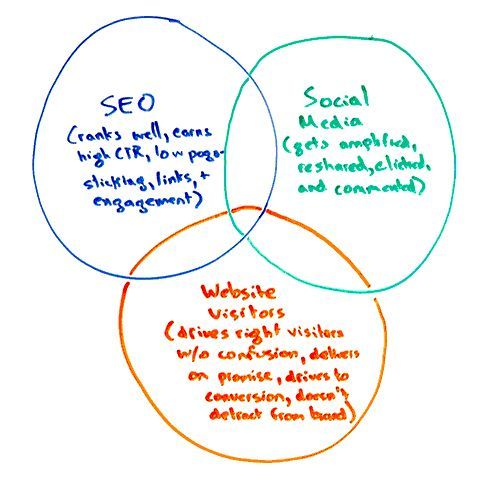
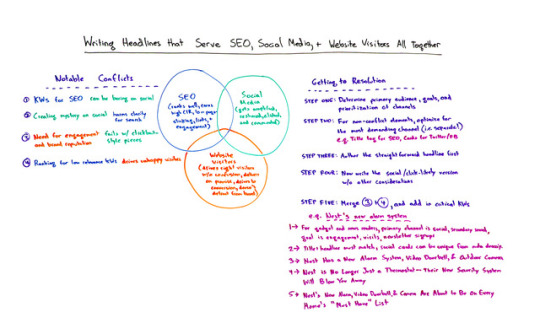
Writing Headlines that Serve SEO, Social Media, and Website Visitors All Together - Whiteboard Friday
Posted by randfish Have your headlines been doing some heavy lifting? If you’ve been using one headline to serve multiple audiences, you’re missing out on some key optimization opportunities. In today’s Whiteboard Friday, Rand gives you a process for writing headlines for SEO, for social media, and for your website visitors — each custom-tailored to its audience and optimized to meet different goals.
Click on the whiteboard image above to open a high-resolution version in a new tab!
<span id=“selection-marker-1″ class=“redactor-selection-marker”></span>
Video Transcription Howdy, Moz fans, and welcome to another edition of Whiteboard Friday. This week we’re going to chat about writing headlines. One of the big problems that headlines have is that they need to serve multiple audiences. So it’s not just ranking and search engines. Even if it was, the issue is that we need to do well on social media. We need to serve our website visitors well in order to rank in the search engines. So this gets very challenging.
I’ve tried to illustrate this with a Venn diagram here. So you can see, basically...
SEO
In the SEO world of headline writing, what I’m trying to do is rank well, earn high click-through rate, because I want a lot of those visitors to the search results to choose my result, not somebody else’s. I want low pogo-sticking. I don’t want anyone clicking the back button and choosing someone else’s result because I didn’t fulfill their needs. I need to earn links, and I’ve got to have engagement.
Social media On the social media side, it’s pretty different actually. I’m trying to earn amplification, which can often mean the headline tells as much of the story as possible. Even if you don’t read the piece, you amplify it, you retweet it, and you re-share it. I’m looking for clicks, and I’m looking for comments and engagement on the post. I’m not necessarily too worried about that back button and the selection of another item. In fact, time on site might not even be a concern at all.
Website visitors For website visitors, both of these are channels that drive traffic. But for the site itself, I’m trying to drive right visitors, the ones who are going to be loyal, who are going to come back, hopefully who are going to convert. I want to not confuse anyone. I want to deliver on my promise so that I don’t create a bad brand reputation and detract from people wanting to click on me in the future. For those of you have visited a site like Forbes or maybe even a BuzzFeed and you have an association of, “Oh, man, this is going to be that clickbait stuff. I don’t want to click on their stuff. I’m going to choose somebody else in the results instead of this brand that I remember having a bad experience with.”
Notable conflicts There are some notable direct conflicts in here.
Keywords for SEO can be really boring on social media sites . When you try and keyword stuff especially or be keyword-heavy, your social performance tends to go terribly.
Creating mystery on social, so essentially not saying what the piece is truly about, but just creating an inkling of what it might be about harms the clarity that you need for search in order to rank well and in order to drive those clicks from a search engine. It also hurts your ability generally to do keyword targeting.
The need for engagement and brand reputation that you’ve got for your website visitors is really going to hurt you if you’re trying to develop those clickbait-style pieces that do so well on social.
In search, ranking for low-relevance keywords is going to drive very unhappy visitors , people who don’t care that just because you happen to rank for this doesn’t necessarily mean that you should, because you didn’t serve the visitor intent with the actual content.
Getting to resolution So how do we resolve this? Well, it’s not actually a terribly hard process. In 2017 and beyond, what’s nice is that search engines and social and visitors all have enough shared stuff that, most of the time, we can get to a good, happy resolution.
Step one: Determine who your primary audience is, your primary goals, and some prioritization of those channels.
You might say, “Hey, this piece is really targeted at search. If it does well on social, that’s fine, but this is going to be our primary traffic driver.” Or you might say, “This is really for internal website visitors who are browsing around our site. If it happens to drive some traffic from search or social, well that’s fine, but that’s not our intent.”
Step two: For non-conflict elements, optimize for the most demanding channel.
For those non-conflicting elements, so this could be the page title that you use for SEO, it doesn’t always have to perfectly match the headline. If it’s a not-even-close match, that’s a real problem, but an imperfect match can still be okay.
So what’s nice in social is you have things like Twitter cards and the Facebook markup, graph markup. That Open Graph markup means that you can have slightly different content there than what you might be using for your snippet, your meta description in search engines. So you can separate those out or choose to keep those distinct, and that can help you as well.
Step three: Author the straightforward headline first.
I’m going to ask you author the most straightforward version of the headline first.
Step four: Now write the social-friendly/click-likely version without other considerations.
Is to write the opposite of that, the most social-friendly or click-likely/click-worthy version. It doesn’t necessarily have to worry about keywords. It doesn’t have to worry about accuracy or telling the whole story without any of these other considerations.
Step five: Merge 3 & 4, and add in critical keywords.
We’re going to take three and four and just merge them into something that will work for both, that compromises in the right way, compromises based on your primary audience, your primary goals, and then add in the critical keywords that you’re going to need.
Examples: I’ve tried to illustrate this a bit with an example. Nest , which Google bought them years ago and then they became part of the Alphabet Corporation that Google evolved into. So Nest is separately owned by Alphabet, Google’s parent company. Nest came out with this new alarm system. In fact, the day we’re filming this Whiteboard Friday, they came out with a new alarm system. So they’re no longer just a provider of thermostats inside of houses. They now have something else.
Step one: So if I’m a tech news site and I’m writing about this, I know that I’m trying to target gadget and news readers. My primary channel is going to be social first, but secondarily search engines. The goal that I’m trying to reach, that’s engagement followed by visits and then hopefully some newsletter sign-ups to my tech site.
Step two: My title and headline in this case probably need to match very closely. So the social callouts, the social cards and the Open Graph, that can be unique from the meta description if need be or from the search snippet if need be.
Step three: I’m going to do step three, author the straightforward headline. That for me is going to be “Nest Has a New Alarm System, Video Doorbell, and Outdoor Camera.” A little boring, probably not going to tremendously well on social, but it probably would do decently well in search.
Step four: My social click-likely version is going to be something more like “Nest is No Longer Just a Thermostat. Their New Security System Will Blow You Away.” That’s not the best headline in the universe, but I’m not a great headline writer. However, you get the idea. This is the click-likely social version, the one that you see the headline and you go, “Ooh, they have a new security system. I wonder what’s involved in that.” You create some mystery. You don’t know that it includes a video doorbell, an outdoor camera, and an alarm. You just hear, “They’ve got a new security system. Well, I better look at it.”
Step five: Then I can try and compromise and say, “Hey, I know that I need to have video doorbell, camera, alarm, and Nest.” Those are my keywords. Those are the important ones. That’s what people are going to be searching for around this announcement, so I’ve got to have them in there. I want to have them close to the front. So “Nest’s New Alarm, Video Doorbell and Camera Are About to Be on Every Home’s Must-Have List.” All right, resolved in there.
So this process of writing headlines to serve these multiple different, sometimes competing priorities is totally possible with nearly everything you’re going to do in SEO and social and for your website visitors. This resolution process is something hopefully you can leverage to get better results.
All right, everyone, we’ll see you again next week for another edition of Whiteboard Friday. Take care.
Video transcription by Speechpad.com
Sign up for The Moz Top 10 , a semimonthly mailer updating you on the top ten hottest pieces of SEO news, tips, and rad links uncovered by the Moz team. Think of it as your exclusive digest of stuff you don’t have time to hunt down but want to read!
http://bit.ly/2zkbxkJ
#lagunabeachseo #newportbeachseo #smallbusinessmarketing #seo #internetmarketing #socialmediamarketing #leadgeneration #contentwriting #bestlocalseo #digitalmarketing
#lagunabeachseo#newportbeachseo#smallbusinessmarketing#seo#internetmarketing#socialmediamarketing#leadgeneration#contentwriting#bestlocalseo#digitalmarketing
3 notes
·
View notes
Photo
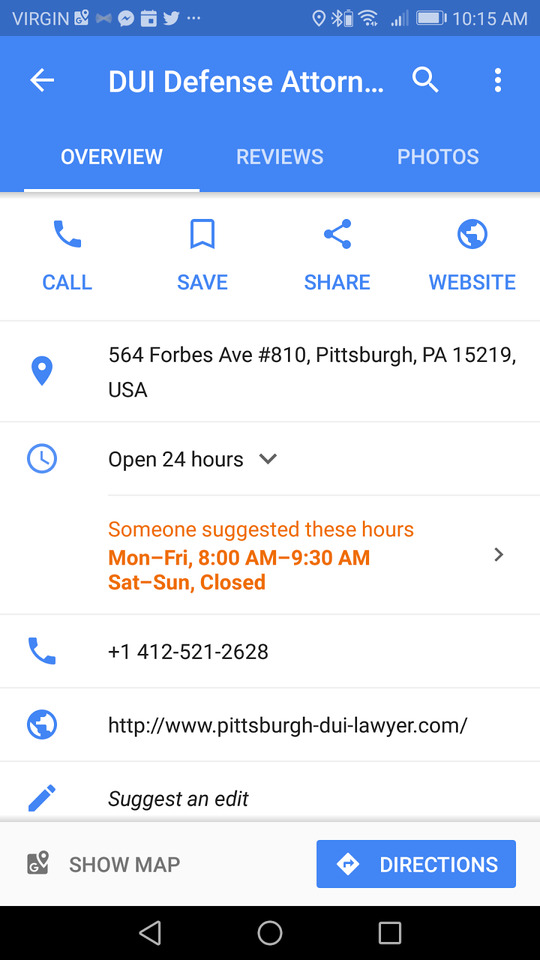


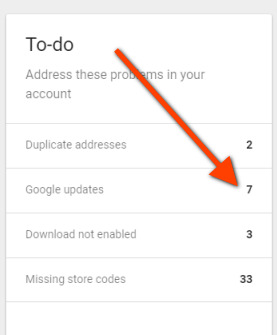
Yes, Competitors Can Edit Your Listing on Google My Business
Posted by JoyHawkins I decided to write this article in response to a recent article that was published over at CBSDFW . The article was one of many stories about how spammers update legitimate information on Google as a way to send more leads somewhere else. This might shock some readers, but it was old news to me since spam of this nature on Google Maps has been a problem for almost a decade.
What sparked my interest in this article was Google’s response. Google stated:
Merchants who manage their business listing info through Google My Business (which is free to use), are notified via email when edits are suggested. Spammers and others with negative intent are a problem for consumers, businesses, and technology companies that provide local business information. We use automated systems to detect for spam and fraud, but we tend not to share details behind our processes so as not to tip off spammers or others with bad intent.
Someone might read that and feel safe, believing that they have nothing to worry about. However, some of us who have been in this space for a long time know that there are several incorrect and misleading statements in that paragraph. I’m going to point them out below.
“Merchants are notified by email”
Google just started notifying users by email last month . Their statement makes it sound like this has been going on for ages. Before September 2017, there were no emails going to people about edits made to their listings.
Not everyone gets an email about edits that have been made. To test this, I had several people submit an update to a listing I own to change the phone number. When the edit went live, the Google account that was the primary owner on the listing got an email; the Google account that was a manager on the listing did not.
Similarly, I am a manager on over 50 listings and 7 of them currently show as having updates in the Google My Business dashboard. I haven’t received a single email since they launched this feature a month ago.
“Notified [...] when edits are suggested” Merchants are not notified when edits are “suggested.” Any time I’ve ever heard of an email notification in the last month, it went out after the edit was already live.
Here’s a recent case on the Google My Business forum . This business owner got an email when his name was updated because the edit was already live. He currently has a pending edit on his listing to change the hours of operation. Clearly this guy is on top of things, so why hasn’t he denied it? Because he wouldn’t even know about it since it’s pending.
The edit isn’t live yet, so he’s not receiving a notification — either by email or inside the Google My Business dashboard. Edits show up in the Google My Business dashboard as “Updates from Google.” Many people think that if they don’t “accept” these edits in the Google My Business dashboard, the edits won’t go live. The reality is that by “accepting” them, you’re just confirming something that’s already live on Google. If you “don’t accept,” you actually need to edit the listing to revert it back (there is no “deny” button).
Here’s another current example of a listing I manage inside Google My Business. The dashboard doesn’t show any updates to the website field, yet there’s a pending edit that I can see on the Google Maps app. A user has suggested that the proper website is a different page on the website than what I currently have. The only way to see all types of pending edits is via Check the Facts on Google Maps . No business owner I’ve ever spoken to has any clue what this is, so I think it’s safe to say they wouldn’t be checking there.
Here’s how I would edit that original response from Google to make it more factually correct:
Merchants who manage their business listing info through Google My Business (which is free to use) are notified when edits made by others are published on Google. Sometimes they are notified by email and the updates are also shown inside the Google My Business dashboard. Google allows users (other than the business owner) to make edits to listings on Google, but the edits are reviewed by either automated systems or, in some cases, actual human beings. Although the system isn’t perfect, Google is continually making efforts to keep the map free from spam and malicious editing.
Do you manage listings that have been edited by competitors? What’s your experience been? Share your story in the comments below !
Sign up for The Moz Top 10 , a semimonthly mailer updating you on the top ten hottest pieces of SEO news, tips, and rad links uncovered by the Moz team. Think of it as your exclusive digest of stuff you don’t have time to hunt down but want to read!
http://bit.ly/2y61K3M
#huntingtonbeachseo #internetmarketing #newportbeachseo #digitalmarketing #lagunabeachseo #articlewriting #bestlocalseo #seo #smallbusinessmarketing #contentwriting
#huntingtonbeachseo#internetmarketing#newportbeachseo#digitalmarketing#lagunabeachseo#articlewriting#bestlocalseo#seo#smallbusinessmarketing#contentwriting
3 notes
·
View notes
Photo

Listen to MozPod, the Free SEO Podcast from Moz
Posted by BrianChilds We’re marketers. We know from firsthand experience that there aren’t enough hours in the day to do everything that needs to get done. And that’s even more true once you commit to leveling up and learning new skills.
The learning curve for developing digital marketing skills can be steep, and staying informed as things evolve and change (thanks, Google) can feel like a full-time job. Our Moz Training has classes to help accelerate the learning process, but as startup folks ourselves, we understand the importance of multitasking.
Learn SEO on the go We’re thrilled to introduce MozPod, an SEO podcast focused on sharing lessons from digital marketing experts. Episodes are led by instructors from Moz Academy and we discuss a wide variety of digital marketing concepts, from common terminology to recent changes and best practices.
Check it out on iTunes
Where can I listen in?
iTunes
The MozPod homepage
Upcoming episodes Our first series covers conversion rate optimization, PageRank, and link building:
Ep. 1: The Science of Crawling and Indexing Guest: Neil Martinsen-Burrell of Moz Dr. Neil Martinsen-Burrell shares his perspective as a statistician on the development of Page Authority and Domain Authority. Great data and interesting stats.
Ep. 2: What’s a Good Conversion Rate? Guest: Carl Schmidt of Unbounce Carl discusses the Unbounce Conversion Rate Benchmark Report and what SEOs can learn from an analysis of over 74 million landing page visitors. Great for content writers.
Ep. 3: Link Building Fundamentals Guest: The PageOnePower team MozPod interviews PageOnePower about how search engines place value on links. Collin, Cody, and Nicholas share the personal wisdom they’ve gained from working at a link building company.
Want to be a guest on MozPod? If you’d like to share your recent SEO analysis or have a topic you think MozPod listeners would find valuable, please send us your ideas! MozPod is a place for our community of SEOs and digital marketers to learn. We’d love to hear from you.
Simply fill out this form to share your idea: Be on MozPod
Give it a listen and let us know what topics you’d like to hear about in the comments!
Listen to MozPod on iTunes
Sign up for The Moz Top 10 , a semimonthly mailer updating you on the top ten hottest pieces of SEO news, tips, and rad links uncovered by the Moz team. Think of it as your exclusive digest of stuff you don’t have time to hunt down but want to read!
http://bit.ly/2i2bB48
#leadgeneration #lagunabeachseo #socialmediamarketing #contentwriting #smallbusinessmarketing #bestlocalseo #huntingtonbeachseo #internetmarketing #blogpower #newportbeachseo
#leadgeneration#lagunabeachseo#socialmediamarketing#contentwriting#smallbusinessmarketing#bestlocalseo#huntingtonbeachseo#internetmarketing#blogpower#newportbeachseo
2 notes
·
View notes
Photo


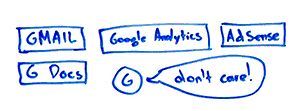

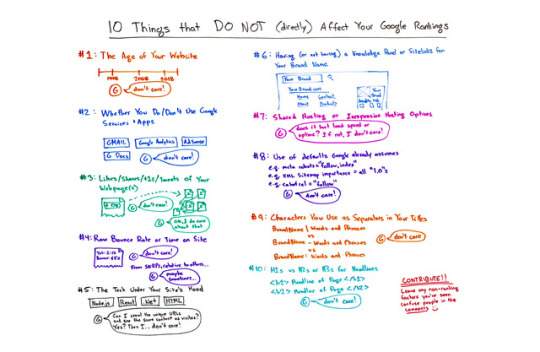
10 Things that DO NOT (Directly) Affect Your Google Rankings - Whiteboard Friday
Posted by randfish What do the age of your site, your headline H1/H2 preference, bounce rate, and shared hosting all have in common? You might’ve gotten a hint from the title: not a single one of them directly affects your Google rankings. In this rather comforting Whiteboard Friday, Rand lists out ten factors commonly thought to influence your rankings that Google simply doesn’t care about.
Click on the whiteboard image above to open a high-resolution version in a new tab!
<span id=“selection-marker-1″ class=“redactor-selection-marker” data-verified=“redactor”></span><span id=“selection-marker-1″ class=“redactor-selection-marker” data-verified=“redactor”></span>
Video Transcription Howdy, Moz fans, and welcome to another edition of Whiteboard Friday. This week we’re going to chat about things that do not affect your Google rankings.
So it turns out lots of people have this idea that anything and everything that you do with your website or on the web could have an impact. Well, some things have an indirect impact and maybe even a few of these do. I’ll talk through those. But tons and tons of things that you do don’t directly affect your Google rankings. So I’ll try and walk through some of these that I’ve heard or seen questions about, especially in the recent past.
1. The age of your website.
First one, longstanding debate: the age of your website. Does Google care if you registered your site in 1998 or 2008 or 2016? No, they don’t care at all. They only care the degree to which your content actually helps people and that you have links and authority signals and those kinds of things. Granted, it is true there’s correlation going in this direction. If you started a site in 1998 and it’s still going strong today, chances are good that you’ve built up lots of links and authority and equity and all these kinds of signals that Google does care about.
But maybe you’ve just had a very successful first two years, and you only registered your site in 2015, and you’ve built up all those same signals. Google is actually probably going to reward that site even more, because it’s built up the same authority and influence in a very small period of time versus a much longer one.
2. Whether you do or don’t use Google apps and services. So people worry that, “Oh, wait a minute. Can’t Google sort of monitor what’s going on with my Google Analytics account and see all my data there and AdSense? What if they can look inside Gmail or Google Docs?”
Google, first off, the engineers who work on these products and the engineers who work on search, most of them would quit right that day if they discovered that Google was peering into your Gmail account to discover that you had been buying shady links or that you didn’t look as authoritative as you really were on the web or these kinds of things. So don’t fear the use of these or the decision not to use them will hurt or harm your rankings in Google web search in any way. It won’t.
3. Likes, shares, plus-ones, tweet counts of your web pages.
So you have a Facebook counter on there, and it shows that you have 17,000 shares on that page. Wow, that’s a lot of shares. Does Google care? No, they don’t care at all. In fact, they’re not even looking at that or using it. But what if it turns out that many of those people who shared it on Facebook also did other activities that resulted in lots of browser activity and search activity, click-through activity, increased branding, lower pogo-sticking rates, brand preference for you in the search results, and links? Well, Google does care about a lot of those things. So indirectly, this can have an impact. Directly, no. Should you buy 10,000 Facebook shares? No, you should not.
4. What about raw bounce rate or time on site?
Well, this is sort of an interesting one. Let’s say you have a time on site of two minutes, and you look at your industry averages, your benchmarks, maybe via Google Analytics if you’ve opted in to sharing there, and you see that your industry benchmarks are actually lower than average. Is that going to hurt you in Google web search? Not necessarily. It could be the case that those visitors are coming from elsewhere. It could be the case that you are actually serving up a faster-loading site and you’re getting people to the information that they need more quickly, and so their time on site is slightly lower or maybe even their bounce rate is higher.
But so long as pogo-sticking type of activity, people bouncing back to the search results and choosing a different result because you didn’t actually answer their query, so long as that remains fine, you’re not in trouble here. So raw bounce rate, raw time on site, I wouldn’t worry too much about that.
5. The tech under your site’s hood.
Are you using certain JavaScript libraries like Node or React, one is Facebook, one is Google. If you use Facebook’s, does Google give you a hard time about it? No. Facebook might, due to patent issues, but anyway we won’t worry about that. .NET or what if you’re coding up things in raw HTML still? Just fine. It doesn’t matter. If Google can crawl each of these URLs and see the unique content on there and the content that Google sees and the content visitors see is the same, they don’t care what’s being used under the hood to deliver that to the browser.
6. Having or not having a knowledge panel on the right-hand side of the search results.
Sometimes you get that knowledge panel, and it shows around the web and some information sometimes from Wikipedia. What about site links, where you search for your brand name and you get branded site links? The first few sets of results are all from your own website, and they’re sort of indented. Does that impact your rankings? No, it does not. It doesn’t impact your rankings for any other search query anyway.
It could be that showing up here and it probably is that showing up here means you’re going to get a lot more of these clicks, a higher share of those clicks, and it’s a good thing. But does this impact your rankings for some other totally unbranded query to your site? No, it doesn’t at all. I wouldn’t stress too much. Over time, sites tend to build up site links and knowledge panels as their brands become bigger and as they become better known and as they get more coverage around the web and online and offline. So this is not something to stress about.
7. What about using shared hosting or some of the inexpensive hosting options out there?
Well, directly, this is not going to affect you unless it hurts load speed or up time. If it doesn’t hurt either of those things and they’re just as good as they were before or as they would be if you were paying more or using solo hosting, you’re just fine. Don’t worry about it.
8. Use of defaults that Google already assumes.
So when Google crawls a site, when they come to a site, if you don’t have a robots.txt file, or you have a robots.txt file but it doesn’t include any exclusions, any disallows, or they reach a page and it has no meta robots tag, they’re just going to assume that they get to crawl everything and that they should follow all the links.
Using things like the meta robots “index, follow” or using, on an individual link, a rel=follow inside the href tag, or in your robots.txt file specifying that Google can crawl everything, doesn’t boost anything. They just assume all those things by default. Using them in these places, saying yes, you can do the default thing, doesn’t give you any special benefit. It doesn’t hurt you, but it gives you no benefit. Google just doesn’t care.
9. Characters that you use as separators in your title element.
So the page title element sits in the header of a document, and it could be something like your brand name and then a separator and some words and phrases after it, or the other way around, words and phrases, separator, the brand name. Does it matter if that separator is the pipe bar or a hyphen or a colon or any other special character that you would like to use? No, Google does not care. You don’t need to worry about it. This is a personal preference issue.
Now, maybe you’ve found that one of these characters has a slightly better click-through rate and preference than another one. If you’ve found that, great. We have not seen one broadly on the web. Some people will say they particularly like the pipe over the hyphen. I don’t think it matters too much. I think it’s up to you.
10. What about using headlines and the H1, H2, H3 tags?
Well, I’ve heard this said: If you put your headline inside an H2 rather than an H1, Google will consider it a little less important. No, that is definitely not true. In fact, I’m not even sure the degree to which Google cares at all whether you use H1s or H2s or H3s, or whether they just look at the content and they say, “Well, this one is big and at the top and bold. That must be the headline, and that’s how we’re going to treat it. This one is lower down and smaller. We’re going to say that’s probably a sub-header.”
Whether you use an H5 or an H2 or an H3, that is your CSS on your site and up to you and your designers. It is still best practices in HTML to make sure that the headline, the biggest one is the H1. I would do that for design purposes and for having nice clean HTML and CSS, but I wouldn’t stress about it from Google’s perspective. If your designers tell you, “Hey, we can’t get that headline in H1. We’ve got to use the H2 because of how our style sheets are formatted.” Fine. No big deal. Don’t stress.
Normally on Whiteboard Friday, we would end right here. But today, I’d like to ask. These 10 are only the tip of the iceberg. So if you have others that you’ve seen people say, “Oh, wait a minute, is this a Google ranking factor?” and you think to yourself, “Ah, jeez, no, that’s not a ranking factor,” go ahead and leave them in the comments. We’d love to see them there and chat through and list all the different non-Google ranking factors.
Thanks, everyone. See you again next week for another edition of Whiteboard Friday. Take care.
Video transcription by Speechpad.com
Sign up for The Moz Top 10 , a semimonthly mailer updating you on the top ten hottest pieces of SEO news, tips, and rad links uncovered by the Moz team. Think of it as your exclusive digest of stuff you don’t have time to hunt down but want to read!
http://bit.ly/2fHlO29
#lagunabeachseo #linkbuilding #bestlocalseo #huntingtonbeachseo #seo #newportbeachseo #leadgeneration #smallbusinessmarketing #articlewriting #digitalmarketing
#lagunabeachseo#linkbuilding#bestlocalseo#huntingtonbeachseo#seo#newportbeachseo#leadgeneration#smallbusinessmarketing#articlewriting#digitalmarketing
2 notes
·
View notes
Photo

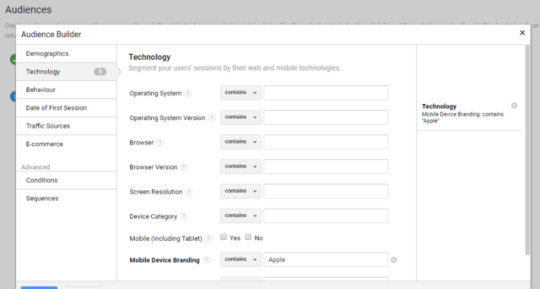
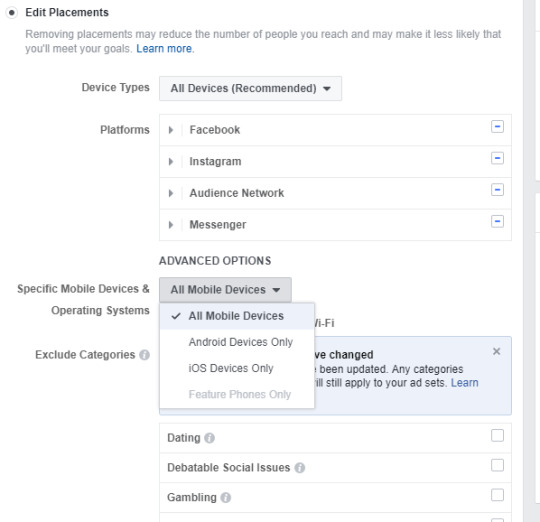
Do iPhone Users Spend More Online Than Android Users?
Posted by MartyMeany Apple has just launched their latest flagship phones to market and later this year they’ll release their uber-flagship: the iPhone X. The iPhone X is the most expensive iPhone yet, at a cool $999. With so many other smartphones on the market offering similar functionality, it begs the question: Do iPhone users simply spend more money than everyone else?
At Wolfgang Digital , we love a bit of data, so we’ve trawled through a massive dataset of 31 million iPhone and Android sessions to finally answer this question. Of course, we’ve got some actionable nuggets of digital marketing strategy at the end, too!
Why am I asking this question? Way back when, before joining the online marketing world, I sold mobile phones. I couldn’t get my head around why people bought iPhones. They’re more expensive than their Android counterparts, which usually offer the same, if not increased, functionality (though you could argue the latter is subjective).
When I moved into the e-commerce department of the same phone retailer, my team would regularly grab a coffee and share little nuggets of interesting e-commerce trends we’d found. My personal favorite was a tale about Apple users spending more than desktop users. The story I read talked about how a hotel raised prices for people booking while using an Apple device. Even with the increased prices, conversion rates didn’t budge as the hotel raked in extra cash.
I’ve always said this story was anecdotal because I simply never saw the data to back it up. Still, it fascinated me.
Finding an answer Fast forward a few years and I’m sitting in Wolfgang Digital behind the huge dataset that powered our 2017 E-Commerce Benchmark KPI Study . It occurred to me that this data could answer some of the great online questions I’d heard over the years. What better place to start than that tale of Apple users spending more money online than others?
The online world has changed a little since I first asked myself this question, so let’s take a fresh 2017 approach.
Do iPhone users spend more than Android users? When this hypothesis first appeared, people were comparing Mac desktop users and PC desktop users, but the game has changed since then. To give the hypothesis a fresh 2017 look, we’re going to ask whether iPhone users spend more than Android users. Looking through the 31 million sessions on both iOS and Android operating systems, then filtering the data by mobile, it didn’t take long to find the the answer to this question that had followed me around for years. The results were astonishing:
On average, Android users spend $11.54 per transaction. iPhone users, on the other hand, spend a whopping $32.94 per transaction. That means iPhone users will spend almost three times as much as Android users when visiting an e-commerce site.
Slightly smug that I’ve finally answered my question, how do we turn this from being an interesting nugget of information to an actionable insight?
What does this mean for digital marketers? As soon as you read about iPhone users spending three times more than Android users, I’m sure you started thinking about targeting users specifically based on their operating system. If iOS users are spending more money than their Android counterparts, doesn’t it make sense to shift your spend and targeting towards iOS users?
You’re right. In both Facebook and AdWords, you can use this information to your advantage.
Targeting operating systems within Facebook Of the “big two” ad platforms, Facebook offers the most direct form of operating system targeting. When creating your ads, Facebook’s Ad Manager will give you the option to target “All Mobile Devices,” “iOS Devices Only,” or “Android Devices Only.” These options mean you can target those high average order value-generating iPhone users.
Targeting operating systems within AdWords AdWords will allow you to target operating systems for both Display Campaigns and Video Campaigns. When it comes to Search, you can’t target a specific operating system. You can, however, create an OS-based audience using Google Analytics. Once this audience is built, you can remarket to an iOS audience with “iPhone”-oriented ad texts. Speaking at Wolfgang Essentials this year, Wil Reynolds showed clips of people talking through their decision to click in SERPs . It’s incredible to see people skipping over year-old content before clicking an article that mentions “iPhone.” Why? Because that user has an iPhone. That’s the power of relevancy.
You’ll also be able to optimize and personalize your bids in Search, safe in the knowledge that iPhone users are more likely to spend big than Android users.
There you have it. Don’t let those mad stories you hear pass you by. You might just learn something!
Sign up for The Moz Top 10 , a semimonthly mailer updating you on the top ten hottest pieces of SEO news, tips, and rad links uncovered by the Moz team. Think of it as your exclusive digest of stuff you don’t have time to hunt down but want to read!
http://bit.ly/2gxHwWO
#blogpower #internetmarketing #newportbeachseo #socialmediamarketing #lagunabeachseo #digitalmarketing #seo #contentwriting #smallbusinessmarketing #bestlocalseo
#blogpower#internetmarketing#newportbeachseo#socialmediamarketing#lagunabeachseo#digitalmarketing#seo#contentwriting#smallbusinessmarketing#bestlocalseo
1 note
·
View note
Photo

Listen to MozPod, the Free SEO Podcast from Moz
Posted by BrianChilds We’re marketers. We know from firsthand experience that there aren’t enough hours in the day to do everything that needs to get done. And that’s even more true once you commit to leveling up and learning new skills.
The learning curve for developing digital marketing skills can be steep, and staying informed as things evolve and change (thanks, Google) can feel like a full-time job. Our Moz Training has classes to help accelerate the learning process, but as startup folks ourselves, we understand the importance of multitasking.
Learn SEO on the go We’re thrilled to introduce MozPod, an SEO podcast focused on sharing lessons from digital marketing experts. Episodes are led by instructors from Moz Academy and we discuss a wide variety of digital marketing concepts, from common terminology to recent changes and best practices.
Check it out on iTunes
Where can I listen in?
iTunes
The MozPod homepage
Upcoming episodes Our first series covers conversion rate optimization, PageRank, and link building:
Ep. 1: The Science of Crawling and Indexing Guest: Neil Martinsen-Burrell of Moz Dr. Neil Martinsen-Burrell shares his perspective as a statistician on the development of Page Authority and Domain Authority. Great data and interesting stats.
Ep. 2: What’s a Good Conversion Rate? Guest: Carl Schmidt of Unbounce Carl discusses the Unbounce Conversion Rate Benchmark Report and what SEOs can learn from an analysis of over 74 million landing page visitors. Great for content writers.
Ep. 3: Link Building Fundamentals Guest: The PageOnePower team MozPod interviews PageOnePower about how search engines place value on links. Collin, Cody, and Nicholas share the personal wisdom they’ve gained from working at a link building company.
Want to be a guest on MozPod? If you’d like to share your recent SEO analysis or have a topic you think MozPod listeners would find valuable, please send us your ideas! MozPod is a place for our community of SEOs and digital marketers to learn. We’d love to hear from you.
Simply fill out this form to share your idea: Be on MozPod
Give it a listen and let us know what topics you’d like to hear about in the comments!
Listen to MozPod on iTunes
Sign up for The Moz Top 10 , a semimonthly mailer updating you on the top ten hottest pieces of SEO news, tips, and rad links uncovered by the Moz team. Think of it as your exclusive digest of stuff you don’t have time to hunt down but want to read!
http://bit.ly/2i2bB48
#socialmediamarketing #bestlocalseo #contentwriting #blogpower #lagunabeachseo #internetmarketing #huntingtonbeachseo #newportbeachseo #leadgeneration #smallbusinessmarketing
#socialmediamarketing#bestlocalseo#contentwriting#blogpower#lagunabeachseo#internetmarketing#huntingtonbeachseo#newportbeachseo#leadgeneration#smallbusinessmarketing
1 note
·
View note
Photo

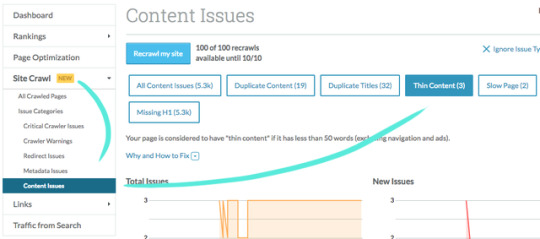
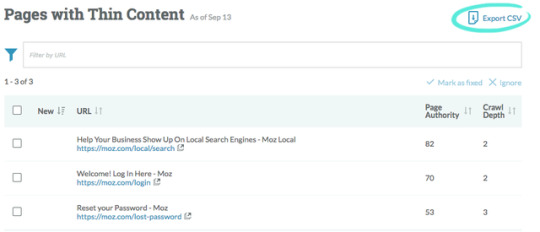


How to Turn Low-Value Content Into Neatly Organized Opportunities - Next Level
Posted by jocameron
Welcome to the newest installment of our educational Next Level series! In our last post, Brian Childs offered up a beginner-level workflow to help discover your competitor’s backlinks . Today, we’re welcoming back Next Level veteran Jo Cameron to show you how to find low-quality pages on your site and decide their new fate. Read on and level up!
With an almost endless succession of Google updates fluctuating the search results, it’s pretty clear that substandard content just won’t cut it.
I know, I know — we can’t all keep up with the latest algorithm updates. We’ve got businesses to run, clients to impress, and a strong social media presence to maintain. After all, you haven’t seen a huge drop in your traffic. It’s probably OK, right?
So what’s with the nagging sensation down in the pit of your stomach? It’s not just that giant chili taco you had earlier. Maybe it’s that feeling that your content might be treading on thin ice. Maybe you watched Rand’s recent Whiteboard Friday ( How to Determine if a Page is “Low Quality” in Google’s Eyes ) and just don’t know where to start.
In this edition of Next Level, I’ll show you how to start identifying your low-quality pages in a few simple steps with Moz Pro’s Site Crawl . Once identified, you can decide whether to merge, shine up, or remove the content.
A quick recap of algorithm updates The latest big fluctuations in the search results were said to be caused by King Fred: enemy of low-quality pages and champion of the people’s right to find and enjoy content of value.
Fred took the fight to affiliate sites, and low-value commercial sites were also affected .
The good news is that even if this isn’t directed at you, and you haven’t taken a hit yourself, you can still learn from this update to improve your site. After all, why not stay on the right side of the biggest index of online content in the known universe? You’ll come away with a good idea of what content is working for your site, and you may just take a ride to the top of the SERPs. Knowledge is power, after all.
Be a Pro It’s best if we just accept that Google updates are ongoing; they happen all.the.time. But with a site audit tool in your toolkit like Moz Pro’s Site Crawl, they don’t have to keep you up at night. Our shiny new Rogerbot crawler is the new kid on the block, and it’s hungry to crawl your pages.
If you haven’t given it a try, sign up for a free trial for 30 days:
Start a free trial
If you’ve already had a free trial that has expired, write to me and I’ll give you another , just because I can.
Set up your Moz Pro campaign — it takes 5 minutes tops — and Rogerbot will be unleashed upon your site like a caffeinated spider.
Rogerbot hops from page to page following links to analyze your website. As Rogerbot hops along, a beautiful database of pages is constructed that flag issues you can use to find those laggers. What a hero!
First stop: Thin content Site Crawl > Content Issues > Thin Content Thin content could be damaging your site. If it’s deemed to be malicious, then it could result in a penalty. Things like zero-value pages with ads or spammy doorway pages — little traps people set to funnel people to other pages — are bad news.
First off, let’s find those pages. Moz Pro Site Crawl will flag “thin content” if it has less than 50 words (excluding navigation and ads).
Now is a good time to familiarize yourself with Google’s Quality Guidelines . Think long and hard about whether you may be doing this, intentionally or accidentally.
You’re probably not straight-up spamming people, but you could do better and you know it. Our mantra is (repeat after me): “ Does this add value for my visitors?” Well, does it?
Ok, you can stop chanting now.
For most of us, thin content is less of a penalty threat and more of an opportunity. By finding pages with thin content, you have the opportunity to figure out if they’re doing enough to serve your visitors. Pile on some Google Analytics data and start making decisions about improvements that can be made.
Using moz.com as an example, I’ve found 3 pages with thin content. Ta-da emoji!
I’m not too concerned about the login page or the password reset page. I am, however, interested to see how the local search page is performing. Maybe we can find an opportunity to help people who land on this page.
Go ahead and export your thin content pages from Moz Pro to CSV.
We can then grab some data from Google Analytics to give us an idea of how well this page is performing. You may want to look at comparing monthly data and see if there are any trends, or compare similar pages to see if improvements can be made.
I am by no means a Google Analytics expert, but I know how to get what I want. Most of the time that is, except when I have to Google it, which is probably every second week.
Firstly: Behavior > Site Content > All Pages > Paste in your URL
Pageviews - The number of times that page has been viewed, even if it’s a repeat view.
Avg. Time on Page - How long people are on your page
Bounce Rate - Single page views with no interaction
For my example page, Bounce Rate is very interesting. This page lives to be interacted with. Its only joy in life is allowing people to search for a local business in the UK, US, or Canada. It is not an informational page at all. It doesn’t provide a contact phone number or an answer to a query that may explain away a high bounce rate.
I’m going to add Pageviews and Bounce Rate a spreadsheet so I can track this over time.
I’ll also added some keywords that I want that page to rank for to my Moz Pro Rankings. That way I can make sure I’m targeting searcher intent and driving organic traffic that is likely to convert.
I’ll also know if I’m being out ranked by my competitors. How dare they, right?
As we’ve found with this local page, not all thin content is bad content. Another example may be if you have a landing page with an awesome video that’s adding value and is performing consistently well. In this case, hold off on making sweeping changes. Track the data you’re interested in; from there, you can look at making small changes and track the impact, or split test some ideas. Either way, you want to make informed, data-driven decisions.
Action to take for tracking thin content pages Export to CSV so you can track how these pages are performing alongside GA data. Make incremental changes and track the results.
Second stop: Duplicate title tags Site Crawl > Content Issues > Duplicate Title Tags Title tags show up in the search results to give human searchers a taste of what your content is about. They also help search engines understand and categorize your content. Without question, you want these to be well considered, relevant to your content, and unique.
Moz Pro Site Crawl flags any pages with matching title tags for your perusal.
Duplicate title tags are unlikely to get your site penalized, unless you’ve masterminded an army of pages that target irrelevant keywords and provide zero value. Once again, for most of us, it’s a good way to find a missed opportunity.
Digging around your duplicate title tags is a lucky dip of wonder. You may find pages with repeated content that you want to merge, or redundant pages that may be confusing your visitors, or maybe just pages for which you haven’t spent the time crafting unique title tags.
Take this opportunity to review your title tags, make them interesting, and always make them relevant. Because I’m a Whiteboard Friday friend, I can’t not link to this title tag hack video. Turn off Netflix for 10 minutes and enjoy.
Pro tip: To view the other duplicate pages, make sure you click on the little triangle icon to open that up like an accordion.
Hey now, what’s this? Filed away under duplicate title tags I’ve found these cheeky pages.
These are the contact forms we have in place to contact our help team. Yes, me included — hi!
I’ve got some inside info for you all. We’re actually in the process of redesigning our Help Hub, and these tool-specific pages definitely need a rethink. For now, I’m going to summon the powerful and mysterious rel=canonical tag .
This tells search engines that all those other pages are copies of the one true page to rule them all. Search engines like this, they understand it, and they bow down to honor the original source, as well they should. Visitors can still access these pages, and they won’t ever know they’ve hit a page with an original source elsewhere. How very magical.
Action to take for duplicate title tags on similar pages Use the rel=canonical tag to tell search engines that http://bit.ly/2i0iYt8 is the original source.
Review visitor behavior and perform user testing on the Help Hub. We’ll use this information to make a plan for redirecting those pages to one main page and adding a tool type drop-down.
More duplicate titles within my subfolder-specific campaign Because at Moz we’ve got a heck of a lot of pages, I’ve got another Moz Pro campaign set up to track the URL moz.com/blog. I find this handy if I want to look at issues on just one section of my site at a time.
You just have to enter your subfolder and limit your campaign when you set it up.
Just remember we won’t crawl any pages outside of the subfolder. Make sure you have an all-encompassing, all-access campaign set up for the root domain as well.
Not enough allowance to create a subfolder-specific campaign? You can filter by URL from within your existing campaign.
In my Moz Blog campaign, I stumbled across these little fellows:
http://bit.ly/2i1CZPM
http://bit.ly/2i1CZPM-10504
This is a classic case of new content usurping the old content. Instead of telling search engines, “Yeah, so I’ve got a few pages and they’re kind of the same, but this one is the one true page,” like we did with the rel=canonical tag before, this time I’ll use the big cousin of the rel=canonical, the queen of content canonicalization, the 301 redirect .
All the power is sent to the page you are redirecting to, as well as all the actual human visitors.
Action to take for duplicate title tags with outdated/updated content Check the traffic and authority for both pages, then add a 301 redirect from one to the other. Consolidate and rule.
It’s also a good opportunity to refresh the content and check whether it’s... what? I can’t hear you — adding value to my visitors ! You got it.
Third stop: Duplicate content Site Crawl > Content Issues > Duplicate Content When the code and content on a page looks the same are the code and content on another page of your site, it will be flagged as “Duplicate Content.” Our crawler will flag any pages with 90% or more overlapping content or code as having duplicate content.
Officially, in the wise words of Google, duplicate content doesn’t incur a penalty . However, it can be filtered out of the index, so still not great.
Having said that, the trick is in the fine print. One bot’s duplicate content is another bot’s thin content, and thin content can get you penalized. Let me refer you back to our old friend, the Quality Guidelines .
Are you doing one of these things intentionally or accidentally? Do you want me to make you chant again?
If you’re being hounded by duplicate content issues and don’t know where to start, then we’ve got more information on duplicate content on our Learning Center .
I’ve found some pages that clearly have different content on them, so why are these duplicate?
So friends, what we have here is thin content that’s being flagged as duplicate.
There is basically not enough content on the page for bots to distinguish them from each other. Remember that our crawler looks at all the page code, as well as the copy that humans see.
You may find this frustrating at first: “Like, why are they duplicates?? They’re different, gosh darn it!” But once you pass through all the 7 stages of duplicate content and arrive at acceptance, you’ll see the opportunity you have here. Why not pop those topics on your content schedule? Why not use the “queen” again, and 301 redirect them to a similar resource, combining the power of both resources? Or maybe, just maybe, you could use them in a blog post about duplicate content — just like I have.
Action to take for duplicate pages with different content Before you make any hasty decisions, check the traffic to these pages. Maybe dig a bit deeper and track conversions and bounce rate, as well. Check out our workflow for thin content earlier in this post and do the same for these pages.
From there you can figure out if you want to rework content to add value or redirect pages to another resource.
This is an awesome video in the ever-impressive Whiteboard Friday series which talks about republishing. Seriously, you’ll kick yourself if you don’t watch it.
Broken URLs and duplicate content Another dive into Duplicate Content has turned up two Help Hub URLs that point to the same page.
These are no good to man or beast. They are especially no good for our analytics — blurgh, data confusion! No good for our crawl budget — blurgh, extra useless page! User experience? Blurgh, nope, no good for that either.
Action to take for messed-up URLs causing duplicate content Zap this time-waster with a 301 redirect. For me this is an easy decision: add a 301 to the long, messed up URL with a PA of 1, no discussion. I love our new Learning Center so much that I’m going to link to it again so you can learn more about redirection and build your SEO knowledge.
It’s the most handy place to check if you get stuck with any of the concepts I’ve talked about today.
Wrapping up While it may feel scary at first to have your content flagged as having issues, the real takeaway here is that these are actually neatly organized opportunities.
With a bit of tenacity and some extra data from Google Analytics, you can start to understand the best way to fix your content and make your site easier to use (and more powerful in the process).
If you get stuck, just remember our chant: “Does this add value for my visitors?” Your content has to be for your human visitors, so think about them and their journey. And most importantly: be good to yourself and use a tool like Moz Pro that compiles potential issues into an easily digestible catalogue.
Enjoy your chili taco and your good night’s sleep!
Sign up for The Moz Top 10 , a semimonthly mailer updating you on the top ten hottest pieces of SEO news, tips, and rad links uncovered by the Moz team. Think of it as your exclusive digest of stuff you don’t have time to hunt down but want to read!
http://bit.ly/2i1D0mO
#leadgeneration #socialmediamarketing #articlewriting #internetmarketing #seo #bestlocalseo #blogpower #lagunabeachseo #newportbeachseo #huntingtonbeachseo
#leadgeneration#socialmediamarketing#articlewriting#internetmarketing#seo#bestlocalseo#blogpower#lagunabeachseo#newportbeachseo#huntingtonbeachseo
1 note
·
View note
Photo




Yes, Competitors Can Edit Your Listing on Google My Business
Posted by JoyHawkins I decided to write this article in response to a recent article that was published over at CBSDFW . The article was one of many stories about how spammers update legitimate information on Google as a way to send more leads somewhere else. This might shock some readers, but it was old news to me since spam of this nature on Google Maps has been a problem for almost a decade.
What sparked my interest in this article was Google’s response. Google stated:
Merchants who manage their business listing info through Google My Business (which is free to use), are notified via email when edits are suggested. Spammers and others with negative intent are a problem for consumers, businesses, and technology companies that provide local business information. We use automated systems to detect for spam and fraud, but we tend not to share details behind our processes so as not to tip off spammers or others with bad intent.
Someone might read that and feel safe, believing that they have nothing to worry about. However, some of us who have been in this space for a long time know that there are several incorrect and misleading statements in that paragraph. I’m going to point them out below.
“Merchants are notified by email”
Google just started notifying users by email last month . Their statement makes it sound like this has been going on for ages. Before September 2017, there were no emails going to people about edits made to their listings.
Not everyone gets an email about edits that have been made. To test this, I had several people submit an update to a listing I own to change the phone number. When the edit went live, the Google account that was the primary owner on the listing got an email; the Google account that was a manager on the listing did not.
Similarly, I am a manager on over 50 listings and 7 of them currently show as having updates in the Google My Business dashboard. I haven’t received a single email since they launched this feature a month ago.
“Notified [...] when edits are suggested” Merchants are not notified when edits are “suggested.” Any time I’ve ever heard of an email notification in the last month, it went out after the edit was already live.
Here’s a recent case on the Google My Business forum . This business owner got an email when his name was updated because the edit was already live. He currently has a pending edit on his listing to change the hours of operation. Clearly this guy is on top of things, so why hasn’t he denied it? Because he wouldn’t even know about it since it’s pending.
The edit isn’t live yet, so he’s not receiving a notification — either by email or inside the Google My Business dashboard. Edits show up in the Google My Business dashboard as “Updates from Google.” Many people think that if they don’t “accept” these edits in the Google My Business dashboard, the edits won’t go live. The reality is that by “accepting” them, you’re just confirming something that’s already live on Google. If you “don’t accept,” you actually need to edit the listing to revert it back (there is no “deny” button).
Here’s another current example of a listing I manage inside Google My Business. The dashboard doesn’t show any updates to the website field, yet there’s a pending edit that I can see on the Google Maps app. A user has suggested that the proper website is a different page on the website than what I currently have. The only way to see all types of pending edits is via Check the Facts on Google Maps . No business owner I’ve ever spoken to has any clue what this is, so I think it’s safe to say they wouldn’t be checking there.
Here’s how I would edit that original response from Google to make it more factually correct:
Merchants who manage their business listing info through Google My Business (which is free to use) are notified when edits made by others are published on Google. Sometimes they are notified by email and the updates are also shown inside the Google My Business dashboard. Google allows users (other than the business owner) to make edits to listings on Google, but the edits are reviewed by either automated systems or, in some cases, actual human beings. Although the system isn’t perfect, Google is continually making efforts to keep the map free from spam and malicious editing.
Do you manage listings that have been edited by competitors? What’s your experience been? Share your story in the comments below !
Sign up for The Moz Top 10 , a semimonthly mailer updating you on the top ten hottest pieces of SEO news, tips, and rad links uncovered by the Moz team. Think of it as your exclusive digest of stuff you don’t have time to hunt down but want to read!
http://bit.ly/2y61K3M
#newportbeachseo #socialmediamarketing #articlewriting #lagunabeachseo #leadgeneration #contentwriting #huntingtonbeachseo #linkbuilding #smallbusinessmarketing #blogpower
#newportbeachseo#socialmediamarketing#articlewriting#lagunabeachseo#leadgeneration#contentwriting#huntingtonbeachseo#linkbuilding#smallbusinessmarketing#blogpower
1 note
·
View note
Photo

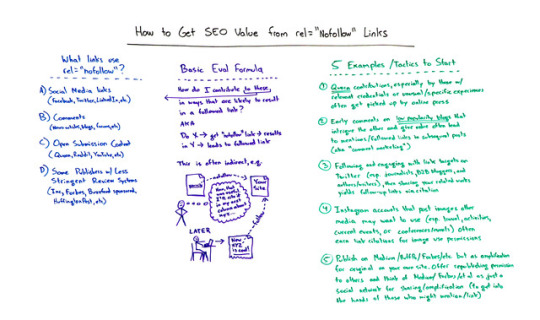
Getting SEO Value from rel=“nofollow” Links - Whiteboard Friday
Posted by randfish Plenty of websites that make it easy for you to contribute don’t make it easy to earn a followed link from those contributions. While rel=nofollow links reign in the land of social media profiles, comments, and publishers, there’s a few ways around it. In today’s Whiteboard Friday, Rand shares five tactics to help you earn equity-passing followed links using traditionally nofollow-only platforms.
Click on the whiteboard image above to open a high-resolution version in a new tab!
Video Transcription Howdy, Moz fans, and welcome to another edition of Whiteboard Friday. This week we’re going to chat about how you can get SEO value from nofollowed links. So in the SEO world, there are followed links. These are the normal ones that you find on almost every website. But then you can have nofollowed links, which you’ll see in the HTML code of a website. You will see the normal thing is a href=somewebsite in here. If you see this rel=nofollow, that means that the search engines — Google, Bing, Yahoo, etc. — will not count this link as passing link equity, at least certainly not in the same way that a followed link would.
So when you see these, you can see them by looking in the source code yourself. You could turn on the MozBar and use the “Show nofollow links” on the Page button and see these.
What sort of links use rel=nofollow? But the basic story is that you’re not getting the same SEO value from them. But there are ways to get it. Recently you might have seen in the SEO news world that Inc. and Forbes and a few other sites like them, last year it was Huffington Post, started applying nofollow tags to all the links that belong to articles from contributors. So if I go and write an article for Inc. today, the links that I point out from my bio and my snippet on there, they’re not going to pass any value, because they have this nofollow applied.
A) Social media links (Facebook, Twitter, LinkedIn, etc.) There are a bunch of types of links use this. Social media, so Facebook, Twitter, and LinkedIn, which is one of the reasons why you can’t just boost your linked profile by going to these places and leaving a bunch of links around.
B) Comments (news articles, blogs, forums, etc.) Comments, so from news articles or blogs or forums where there’s discussion, Q&A sites, those comments, all the links in them that you leave again nofollowed.
C) Open submission content (Quora, Reddit, YouTube, etc.) Open submission content, so places like Quora where you could write a post, or Reddit, where you could write a post, or YouTube where you could upload a video and have a post and have a link, most of those, in fact almost all of them now have nofollows as do the profile links that are associated. Your Instagram account, for example, that would be a social media one. But it’s not just the pictures you post on Instagram. Your profile link is one of the only places in the Instagram platform where you actually get a real URL that you can send people to, but that is nofollowed on the web.
D) Some publishers with less stringent review systems (Forbes, Buzzfeed, LinkedIn Pulse, etc.) Some publishers now with these less stringent publishing review systems, so places like Inc., Forbes, BuzzFeed in some cases with their sponsored posts, Huffington Post, LinkedIn’s Pulse platform, and a bunch of others all use this rel=nofollow.
Basic evaluation formula for earning followed links from the above sources
The basic formula that we need to go to here is: How do you contribute to all of these places in ways that will ultimately result in followed links and that will provide you with SEO value? So we’re essentially saying I’m going to do X. I know that’s going to bring a nofollowed link, but that nofollowed link will result in this other thing happening that will then lead to a followed link.
Do X → Get rel=nofollow link → Results in Y → Leads to followed link
5 examples/tactics to start This other thing happening can be a bunch of different things. It could be something indirect. You post something with your site on one of these places. It includes a nofollow link. Someone finds it. We’ll just call this guy over here, this is our friendly editor who works for a publication and finds it and says, “Hmm, that link was actually quite useful,” or the information it pointed to was useful, the article was useful, your new company seems useful, whatever it is. Later, as that editor is writing, they will link over to your site, and this will be a followed link. Thus, you’re getting the SEO value. You’ve indirectly gained SEO value essentially through amplification of what you were sharing through your link.
Google likes this. They want you to use all of these places to show stuff, and then they’re hoping that if people find it truly valuable, they’ll pick it up, they’ll link to it, and then Google can reward that.
So some examples of places where you might attempt this in the early stages. These are a very small subset of what you could do, and it’s going to be different for every industry and every endeavor.
1. Quora contributions But Quora contributions, especially those if you have relevant or high value credentials or very unique, specific experiences, that will often get picked up by the online press. There are lots of editors and journalists and publications of all kinds that rely on interesting answers to Quora questions to use in their journalism, and then they’ll cite you as a source, or they’ll ask you to contribute, they’ll ask you for a quote, they’ll point to your website, all that kind of stuff.
2. Early comments on low-popularity blogs Early comments especially in, I know this is going to sound odd, but low-popularity blogs, rather than high-popularity ones. Why low popularity? Because you will stand out. You’re less likely to be seen as a spammer, especially if you’re an authentic contributor. You don’t get lost in the noise. You can create intrigue, give value, and that will often lead to that writer or that blogger picking you up with followed links in subsequent posts. If you want more on this tactic, by the way, check out our Whiteboard Friday on comment marketing from last year. That was a deep dive into this topic.
3. Following and engaging with link targets on Twitter Number three, following and engaging with your link targets on Twitter, especially if your link targets are heavily invested in Twitter, like journalists, B2B bloggers and contributors, and authors or people who write for lots of different publications. It doesn’t have to be a published author. It can just be a writer who writes for lots of online pieces. Then sharing your related content with them or just via your Twitter account, if you’re engaging with them a lot, chances are good you can get a follow back, and that will lead to a lot of followed up links with a citation.
4. Link citations from Instagram images Instagram accounts. When you post images on Instagram, if you use the hashtags — hashtag marketing is kind of one of the only ways to get exposure on Instagram — but if you use hashtags that you know journalists, writers, editors, and publications of any kind in your field are picking up and need, especially travel, activities, current events, stuff that’s in the news, or conferences and events, many times folks will pick up those images and ask you for permission to use them. If you’re willing to give it, you can earn link citations. Another important reason to associate that URL with your site so that people can get in touch with you.
5. Amplify content published on your site by republishing on other platforms If you’re using some of these platforms that are completely nofollow or platforms that are open contribution and have follow links, but where we suspect Google probably doesn’t count them, Medium being one of the biggest places, you can use republishing tactics. So essentially you’re writing on your own website first. Writing on your own website first, but then you are republishing on some of these other places.
I’m going to go Forbes. I’m going to publish my column on Forbes. I’m going to go to Medium. I’m going to publish in my Medium account. I’m going to contribute Huffington Post with the same piece. I’m republishing across these multiple platforms, and essentially you can think of this as it’s not duplicate content. You’re not hurting yourself, because these places are all pointing back to your original. It’s technically duplicate content, but not the kind that’s going to be bothersome for search engines.
You’re essentially using these the same way you would use your Twitter or Facebook or LinkedIn, where you are pushing it out as a way to say, “Here, check this out if you’re on these platforms, and here’s the original back here.” You can do that with the full article, just like you would do full content in RSS or full content for email subscribers. Then use those platforms for sharing and amplification to get into the hands of people who might link later.
So nofollowed links, not a direct impact, but potentially a very powerful, indirect way to get lots of good links and lots of good SEO value.
All right, everyone, hope you’ve enjoyed this edition of Whiteboard Friday, and we’ll see you again next week. Take care.
Video transcription by Speechpad.com
Sign up for The Moz Top 10 , a semimonthly mailer updating you on the top ten hottest pieces of SEO news, tips, and rad links uncovered by the Moz team. Think of it as your exclusive digest of stuff you don’t have time to hunt down but want to read!
http://bit.ly/2y18Owe
#lagunabeachseo #socialmediamarketing #huntingtonbeachseo #articlewriting #blogpower #digitalmarketing #internetmarketing #newportbeachseo #bestlocalseo #contentwriting
#lagunabeachseo#socialmediamarketing#huntingtonbeachseo#articlewriting#blogpower#digitalmarketing#internetmarketing#newportbeachseo#bestlocalseo#contentwriting
1 note
·
View note
Photo
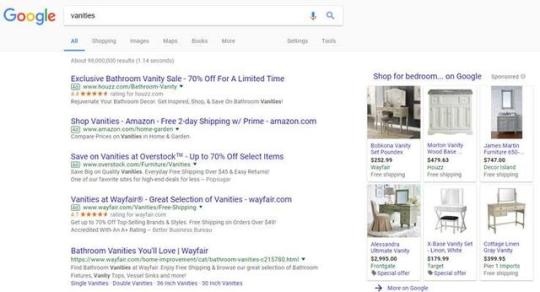

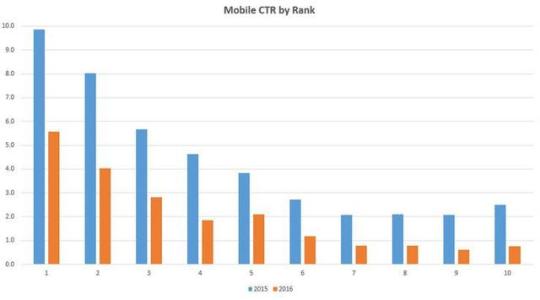
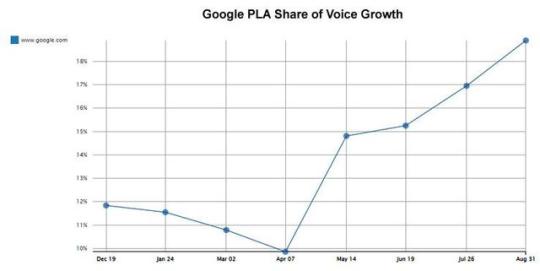
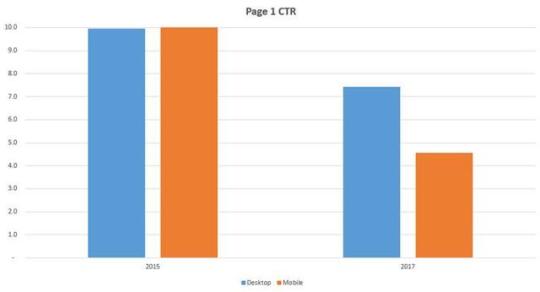
New Findings Show Google Organic Clicks Shifting to Paid
Posted by Brian_W On the Wayfair SEO team, we keep track of our non-branded click curves: the average click-through rate (CTR) for each ranking position. This helps us accurately evaluate the potential opportunity of keyword clusters.
Over the last two years, the total share of organic clicks on page one of our e-commerce SERPs has dropped 25% on desktop and 55% on mobile.
For the ad-heavy non-local SERPs that we work in, paid ads are likely now earning nearly the same percentage of clicks as organic results — a staggering change from most of the history of Google.
Organic CTR loses 25% of click share on desktop, 55% on mobile Looking at 2015 vs 2017 data for all keywords ranking organically on the first page, we’ve seen a dramatic change in CTR. Below we’ve normalized our actual CTR on a 1–10 scale, representing a total drop of 25% of click share on desktop and 55% on mobile.
Organic receives 25% less desktop CTR and 55% less mobile CTR compared to two years ago.
The much larger drop on mobile is particularly relevant because we’ve seen large traffic shifts to mobile over the last two years as well. The overall percentage drop plays out somewhat similarly across the first page of results; however, the top four were most heavily impacted.
The first four organic results were most heavily impacted by the CTR shift from organic to paid.
About the data It’s important to note that this type of CTR change is not true for every SERP. This data is only applicable to e-commerce intent search queries, where ads and PLAs are on nearly every query.
We gather the impression, click, and rank data from Search Console. While Search Console data isn’t quantitatively correct, it does appear to be directionally correct for us (if we see clicks double in Search Console, we also see organic Google traffic double in our analytics), site improvements that lead to meaningful CTR gains appear to be reflected in Search Console, we can roughly verify impressions via ad data, and we can confirm the accuracy of rank. For purposes of this data pull, we excluded any keywords that Search Console reported as a non-integer rank (such as ranking 1.2). We have thousands of page one keywords, including many large head terms comprising millions of combined clicks, which gives us a lot of data for each ranking position.
We remove all branded queries from the data, which hugely skews click curves.
It’s important to note that paid ads are not getting all the clicks that organic is not. In addition to the small number of people who click beyond the first page, a surprising number do not click at all. Our best guess is that all ads combined now get about the same percentage of clicks (for our results) as all organic results combined.
Why is this happening? It’s no secret to SEOs who work on transactional keywords why we no longer gain as large a share of clicks for our best rankings. We suspect the primary causes are the following:
Ads serving on more queries
More ads per query
Larger ads, with more space given to each ad
Google Shopping (which show up on more queries, list more products per query, and take up more space)
Subtler ad labeling, making it less obvious that an ad is an ad
At Wayfair, we’ve seen Google Shopping results appear on more and more search queries over the last year. Using Stat Search Analytics, we can track the growth in queries serving Google Shopping results (modified by search volume to give a qualitative visibility score) across the 25,000 keywords we track daily on mobile and desktop. The overall share of voice of Google Shopping has grown nearly 60% in the last year.
Number of transactional queries serving Google Shopping has grown nearly 60% in the last year.
On top of this, we’re often seeing four PPC ads for a typical non-branded commercial term, in addition to the Google Shopping results.
And with the expanded size of ads on mobile, almost none of our queries show anything other than ads without scrolling:
This great image from Edwords shows the steady growth in percent of the desktop page consumed by ads for a query that has only three ad results. We go from seeing five organic results above the scroll, to just one. In more recent years we’ve seen this size growth explode on mobile as well.
At the same time that ads have grown, the labeling of ads has become increasingly subtle. In a 2015 study, Ofcom found that half of adults don’t recognize ads in Google, and about 70% of teenagers didn’t recognize Google ads — and ad labeling has become substantially less obvious since then. For most of its history, Google ads were labeled by a large colored block that was intuitively separate from the non-ad results, though sometimes not visible on monitors with a higher brightness setting.
2000 – Shaded background around all ads:
2010 – Shaded background still exists around ads:
2014 – No background; yellow box label next to each ad (and ads take up a lot more space):
2017 – Yellow box changed to green, the same color as the URL it’s next to (and ads take up even more space):
2017 – Green box changed to a thin green outline the same color as the URL:
What to do about it The good news is that this is impacting everyone in e-commerce equally, and all those search clicks are still happening — in other words, those users haven’t gone away. The growth in the number of searches each year means that you probably aren’t seeing huge losses in organic traffic; instead, it will show as small losses or anemic growth. The bad news is that it will cost you — as well as your competitors — more money to capture the same overall share of search traffic.
A strong search marketing strategy has always involved organic, paid search, and PLA combined. Sites optimizing for all search channels are already well-positioned to capture search traffic regardless of ad changes to the SERPs: if SEO growth slows, then PLA and paid search growth speeds up. As real estate for one channel shrinks, real estate for others grows.
If you haven’t been strongly invested in search ads or PLAs, then the Chinese proverb on the best time to plant a tree applies perfectly:
The best time to plant a tree was 20 years ago. The second best time is now.
With a similar percentage of clicks going to paid and organic, your investment in each should be similar (unless, of course, you have some catching up to do with one channel).
Sign up for The Moz Top 10 , a semimonthly mailer updating you on the top ten hottest pieces of SEO news, tips, and rad links uncovered by the Moz team. Think of it as your exclusive digest of stuff you don’t have time to hunt down but want to read!
http://bit.ly/2xXXX6a
#contentwriting #blogpower #bestlocalseo #socialmediamarketing #newportbeachseo #seo #internetmarketing #lagunabeachseo #articlewriting #digitalmarketing
#contentwriting#blogpower#bestlocalseo#socialmediamarketing#newportbeachseo#seo#internetmarketing#lagunabeachseo#articlewriting#digitalmarketing
1 note
·
View note
Photo
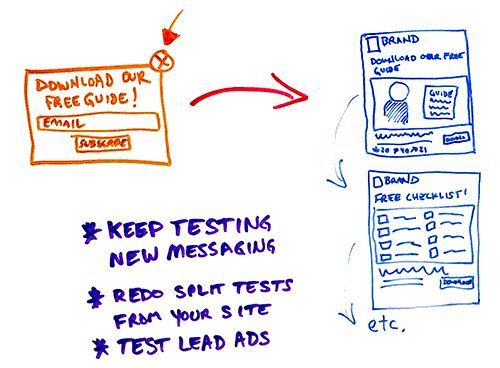


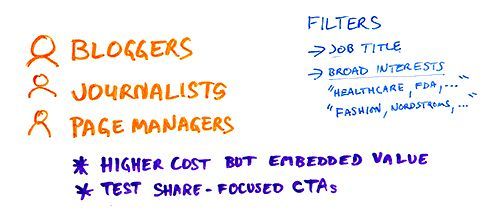
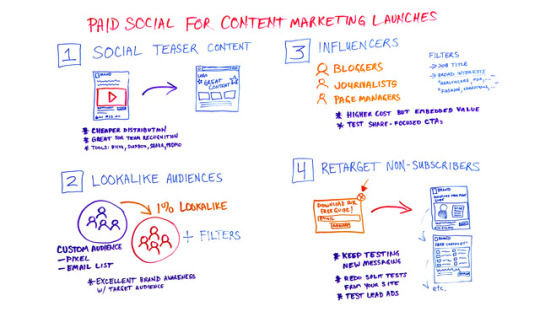
Paid Social for Content Marketing Launches - Whiteboard Friday
Posted by KaneJamison Stuck in a content marketing rut? Relying on your existing newsletter, social followers, or email outreach won’t do your launches justice. Boosting your signal with paid social both introduces your brand to new audiences and improves your launch’s traffic and results. In today’s Whiteboard Friday, we’re welcoming back our good friend Kane Jamison to highlight four straightforward, actionable tactics you can start using ASAP.
Click on the whiteboard image above to open a high-resolution version in a new tab!
Video Transcription Howdy, Moz fans. My name is Kane. I’m the founder of a content marketing agency here in Seattle called Content Harmony , and we do a lot of content marketing projects where we use paid social to launch them and get better traffic and results.
So I spoke about this, this past year at MozCon , and what I want to do today is share some of those tactics with you and help you get started with launching your content with some paid traction and not just relying on your email outreach or maybe your own existing email newsletter and social followers.
Especially for a lot of companies that are just getting started with content marketing, that audience development component is really important. A lot of people just don’t have a significant market share of their industry subscribed to their newsletter. So it’s great to use paid social in order to reach new people, get them over to your most important content projects, or even just get them over to your week-to-week blog content.
Social teaser content So the first thing I want to start with is expanding a little bit beyond just your average image ad. A lot of social networks, especially Facebook, are promoting video heavily nowadays. You can use that to get a lot cheaper engagement than you can from a typical image ad. If you’ve logged in to your Facebook feed lately, you’ve probably noticed that aside from birth announcements, there’s a lot of videos filling up the feed. So as an advertiser, if you want to blend in well with that, using video as a teaser or a sampler for the content that you’re producing is a great way to kind of look natural and look like you belong in the user’s feed.
So different things you can do include:
Short animated videos explaining what the project is and why you did it.
Maybe doing talking head videos with some of your executives or staff or marketing team , just talking on screen with whatever in the background about the project you created and kind of drumming up interest to actually get people over to the site.
So that can be really great for team recognition if you’re trying to build thought leadership in your space. It’s a great way to introduce the face of your team members that might be speaking at industry conferences and events. It’s a great way to just get people recognizing their name or maybe just help them feel closer to your company because they recognize their voice and face.
So everybody’s instant reaction, of course, is, “I don’t have the budget for video.” That’s okay. You don’t need to be a videography expert to create decent social ads. There’s a lot of great tools out there.
Soapbox by Wistia is a great one, that’s been released recently, that allows you to do kind of a webcam combined with your browser type of video. There are also tools like...
Bigvu.tv
Shakr
Promo , which is a tool by a company called Slidely, I think.
All of those tools are great ways to create short, 20-second, 60-second types of videos. They let you create captions. So if you’re scrolling through a social feed and you see an autoplay video, there’s a good chance that the audio on that is turned off, so you can create captions to let people know what the video is about if it’s not instantly obvious from the video itself. So that’s a great way to get cheaper distribution than you might get from your typical image ad, and it’s really going to stick out to users because most other companies aren’t spending the time to do that.
Lookalike audiences
Another really valuable tactic is to create lookalike audiences from your best customers. Now, you can track your best customers in a couple of ways:
You could have a pixel , a Facebook pixel or another network pixel on your website that just tracks the people that have been to the site a number of times or that have been through the shopping cart at a certain dollar value.
We can take our email list and use the emails of customers that have ordered from us or just the emails of customers that are on our newsletter that seem like they open up every newsletter and they really like our content.
We can upload those into a custom audience in the social network of our choice and then create what’s called a lookalike audience. In this case, I’d recommend what’s called a “one percent lookalike audience.” So if you’re targeting people in the US, it means the one percent of people in the US that appear most like your audience. So if your audience is men ages 35 to 45, typically that are interested in a specific topic, the lookalike audience will probably be a lot of other men in a similar age group that like similar topics.
So Facebook is making that choice, which means you may or may not get the perfect audience right from the start. So it’s great to test additional filters on top of the default lookalike audience. So, for example, you could target people by household income. You could target people by additional interests that may or may not be obvious from the custom audience, just to make sure you’re only reaching the users that are interested in your topic. Whatever it might be, if this is going to end up being three or four million people at one percent of the country, it’s probably good to go ahead and filter that down to a smaller audience that’s a little bit closer to your exact target that you want to reach. So excellent way to create brand awareness with that target audience.
Influencers
The next thing I’d like you to test is getting your ads and your content in front of influencers in your space. That could mean...
Bloggers
Journalists
Or it could just mean people like page managers in Facebook , people that have access to a Facebook page that can share updates. Those could be social media managers . That could be bloggers. That could even be somebody running the page for the local church or a PTA group . Regardless, those people are probably going to have a lot of contacts, be likely to share things with friends and family or followers on social media.
Higher cost but embedded value
When you start running ads to this type of group, you’re going to find that it costs a little bit more per click. If you’re used to paying $0.50 to $1.00 per click, you might end up paying $1.00 or $2.00 per click to reach this audience. That’s okay. There’s a lot more embedded value with this audience than the typical user, because they’re likely, on average, to have more reach, more followers, more influence.
Test share-focused CTAs
It’s worth testing share focus call to actions. What that means is encouraging people to share this with some people they know that might be interested. Post it to their page even is something worth testing. It may or may not work every time, but certainly valuable to test.
Filters
So the way we recommend reaching most of these users is through something like a job title filter. Somebody says they’re a blogger, says they’re an editor-in-chief, that’s the clearest way to reach them. They may not always have that as their job title, so you could also do employers. That’s another good example.
I recommend combining that with broad interests . So if I am targeting journalists because I have a new research piece out, it’s great for us to attach interests that are relevant to our space. If we’re in health care, we might target people interested in health care and the FDA and other big companies in the space that they’d likely be following for updates. If we’re in fashion, we might just be selecting people that are fans of big brands, Nordstrom and others like that. Whatever it is, you can take this audience of a few hundred thousand or whatever it might be down to just a few thousand and really focus on the people that are most likely to be writing about or influential in your space.
Retarget non-subscribers
The fourth thing you can test is retargeting non-subscribers. So a big goal of content marketing is having those pop-ups or call to actions on the site to get people to download a bigger piece of content, download a checklist, whatever it might be so that we can get them on our email newsletter. There’s a lot of people that are going to click out of that. 90% to 95% of the people that visit your site or more probably aren’t going to take that call to action.
So what we can do is convert this into more of a social ad unit and just show the same messaging to the people that didn’t sign up on the site. Maybe they just hate pop-ups by default. They will never sign up for them. That’s okay. They might be more receptive to a lead ad in Facebook that says “subscribe” or “download” instead of something that pops up on their screen.
Keep testing new messaging
The other thing we can do is start testing new messages and new content. Maybe this offer wasn’t interesting to them because they don’t need that guide, but maybe they need your checklist instead, or maybe they’d just like your email drip series that has an educational component to it. So keep testing different types of messaging. Just because this one wasn’t valuable doesn’t mean your other content isn’t interesting to them, and it doesn’t mean they’re not interested in your email list.
Redo split tests from your site
We can keep testing messaging. So if we are testing messaging on our site, we might take the top two or three and test that messaging on ads. We might find that different messaging works better on social than it does on pop-ups or banners on the site. So it’s worth redoing split tests that seemed conclusive on your site because things might be different on the social media network.
So that’s it for today. What I’d love for you guys to do is if you have some great examples of targeting that’s worked for you, messaging that’s worked for you, or just other paid social tactics that have worked really well for your content marketing campaigns, I’d love to hear examples of that in the comments on the post, and we’d be happy to answer questions you guys have on how to actually get some of this stuff done. Whether it’s targeting questions, how to set up lookalike audiences, anything like that, we’d be happy to answer questions there as well.
So that’s it for me today. Thanks, Moz fans. We’ll see you next time.
Video transcription by Speechpad.com
Sign up for The Moz Top 10 , a semimonthly mailer updating you on the top ten hottest pieces of SEO news, tips, and rad links uncovered by the Moz team. Think of it as your exclusive digest of stuff you don’t have time to hunt down but want to read!
http://bit.ly/2xI1sgQ
#lagunabeachseo #socialmediamarketing #leadgeneration #digitalmarketing #huntingtonbeachseo #smallbusinessmarketing #blogpower #seo #newportbeachseo #internetmarketing
#lagunabeachseo#socialmediamarketing#leadgeneration#digitalmarketing#huntingtonbeachseo#smallbusinessmarketing#blogpower#seo#newportbeachseo#internetmarketing
1 note
·
View note
Photo
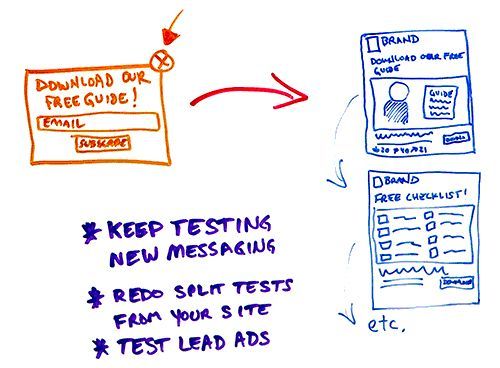
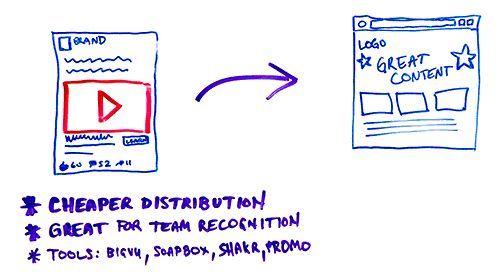

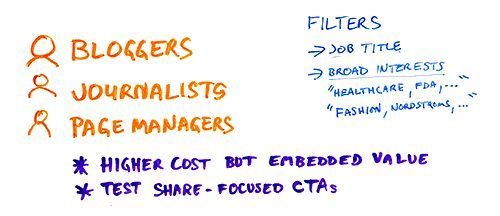
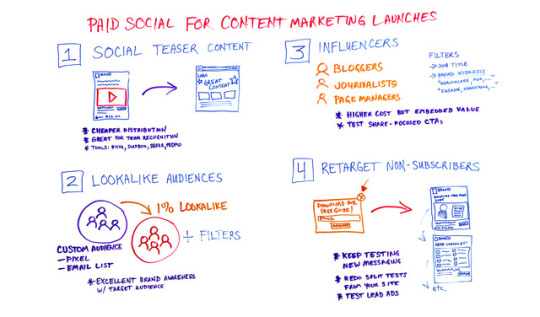
Paid Social for Content Marketing Launches - Whiteboard Friday
Posted by KaneJamison Stuck in a content marketing rut? Relying on your existing newsletter, social followers, or email outreach won’t do your launches justice. Boosting your signal with paid social both introduces your brand to new audiences and improves your launch’s traffic and results. In today’s Whiteboard Friday, we’re welcoming back our good friend Kane Jamison to highlight four straightforward, actionable tactics you can start using ASAP.
Click on the whiteboard image above to open a high-resolution version in a new tab!
Video Transcription Howdy, Moz fans. My name is Kane. I’m the founder of a content marketing agency here in Seattle called Content Harmony , and we do a lot of content marketing projects where we use paid social to launch them and get better traffic and results.
So I spoke about this, this past year at MozCon , and what I want to do today is share some of those tactics with you and help you get started with launching your content with some paid traction and not just relying on your email outreach or maybe your own existing email newsletter and social followers.
Especially for a lot of companies that are just getting started with content marketing, that audience development component is really important. A lot of people just don’t have a significant market share of their industry subscribed to their newsletter. So it’s great to use paid social in order to reach new people, get them over to your most important content projects, or even just get them over to your week-to-week blog content.
Social teaser content So the first thing I want to start with is expanding a little bit beyond just your average image ad. A lot of social networks, especially Facebook, are promoting video heavily nowadays. You can use that to get a lot cheaper engagement than you can from a typical image ad. If you’ve logged in to your Facebook feed lately, you’ve probably noticed that aside from birth announcements, there’s a lot of videos filling up the feed. So as an advertiser, if you want to blend in well with that, using video as a teaser or a sampler for the content that you’re producing is a great way to kind of look natural and look like you belong in the user’s feed.
So different things you can do include:
Short animated videos explaining what the project is and why you did it.
Maybe doing talking head videos with some of your executives or staff or marketing team , just talking on screen with whatever in the background about the project you created and kind of drumming up interest to actually get people over to the site.
So that can be really great for team recognition if you’re trying to build thought leadership in your space. It’s a great way to introduce the face of your team members that might be speaking at industry conferences and events. It’s a great way to just get people recognizing their name or maybe just help them feel closer to your company because they recognize their voice and face.
So everybody’s instant reaction, of course, is, “I don’t have the budget for video.” That’s okay. You don’t need to be a videography expert to create decent social ads. There’s a lot of great tools out there.
Soapbox by Wistia is a great one, that’s been released recently, that allows you to do kind of a webcam combined with your browser type of video. There are also tools like...
Bigvu.tv
Shakr
Promo , which is a tool by a company called Slidely, I think.
All of those tools are great ways to create short, 20-second, 60-second types of videos. They let you create captions. So if you’re scrolling through a social feed and you see an autoplay video, there’s a good chance that the audio on that is turned off, so you can create captions to let people know what the video is about if it’s not instantly obvious from the video itself. So that’s a great way to get cheaper distribution than you might get from your typical image ad, and it’s really going to stick out to users because most other companies aren’t spending the time to do that.
Lookalike audiences
Another really valuable tactic is to create lookalike audiences from your best customers. Now, you can track your best customers in a couple of ways:
You could have a pixel , a Facebook pixel or another network pixel on your website that just tracks the people that have been to the site a number of times or that have been through the shopping cart at a certain dollar value.
We can take our email list and use the emails of customers that have ordered from us or just the emails of customers that are on our newsletter that seem like they open up every newsletter and they really like our content.
We can upload those into a custom audience in the social network of our choice and then create what’s called a lookalike audience. In this case, I’d recommend what’s called a “one percent lookalike audience.” So if you’re targeting people in the US, it means the one percent of people in the US that appear most like your audience. So if your audience is men ages 35 to 45, typically that are interested in a specific topic, the lookalike audience will probably be a lot of other men in a similar age group that like similar topics.
So Facebook is making that choice, which means you may or may not get the perfect audience right from the start. So it’s great to test additional filters on top of the default lookalike audience. So, for example, you could target people by household income. You could target people by additional interests that may or may not be obvious from the custom audience, just to make sure you’re only reaching the users that are interested in your topic. Whatever it might be, if this is going to end up being three or four million people at one percent of the country, it’s probably good to go ahead and filter that down to a smaller audience that’s a little bit closer to your exact target that you want to reach. So excellent way to create brand awareness with that target audience.
Influencers
The next thing I’d like you to test is getting your ads and your content in front of influencers in your space. That could mean...
Bloggers
Journalists
Or it could just mean people like page managers in Facebook , people that have access to a Facebook page that can share updates. Those could be social media managers . That could be bloggers. That could even be somebody running the page for the local church or a PTA group . Regardless, those people are probably going to have a lot of contacts, be likely to share things with friends and family or followers on social media.
Higher cost but embedded value
When you start running ads to this type of group, you’re going to find that it costs a little bit more per click. If you’re used to paying $0.50 to $1.00 per click, you might end up paying $1.00 or $2.00 per click to reach this audience. That’s okay. There’s a lot more embedded value with this audience than the typical user, because they’re likely, on average, to have more reach, more followers, more influence.
Test share-focused CTAs
It’s worth testing share focus call to actions. What that means is encouraging people to share this with some people they know that might be interested. Post it to their page even is something worth testing. It may or may not work every time, but certainly valuable to test.
Filters
So the way we recommend reaching most of these users is through something like a job title filter. Somebody says they’re a blogger, says they’re an editor-in-chief, that’s the clearest way to reach them. They may not always have that as their job title, so you could also do employers. That’s another good example.
I recommend combining that with broad interests . So if I am targeting journalists because I have a new research piece out, it’s great for us to attach interests that are relevant to our space. If we’re in health care, we might target people interested in health care and the FDA and other big companies in the space that they’d likely be following for updates. If we’re in fashion, we might just be selecting people that are fans of big brands, Nordstrom and others like that. Whatever it is, you can take this audience of a few hundred thousand or whatever it might be down to just a few thousand and really focus on the people that are most likely to be writing about or influential in your space.
Retarget non-subscribers
The fourth thing you can test is retargeting non-subscribers. So a big goal of content marketing is having those pop-ups or call to actions on the site to get people to download a bigger piece of content, download a checklist, whatever it might be so that we can get them on our email newsletter. There’s a lot of people that are going to click out of that. 90% to 95% of the people that visit your site or more probably aren’t going to take that call to action.
So what we can do is convert this into more of a social ad unit and just show the same messaging to the people that didn’t sign up on the site. Maybe they just hate pop-ups by default. They will never sign up for them. That’s okay. They might be more receptive to a lead ad in Facebook that says “subscribe” or “download” instead of something that pops up on their screen.
Keep testing new messaging
The other thing we can do is start testing new messages and new content. Maybe this offer wasn’t interesting to them because they don’t need that guide, but maybe they need your checklist instead, or maybe they’d just like your email drip series that has an educational component to it. So keep testing different types of messaging. Just because this one wasn’t valuable doesn’t mean your other content isn’t interesting to them, and it doesn’t mean they’re not interested in your email list.
Redo split tests from your site
We can keep testing messaging. So if we are testing messaging on our site, we might take the top two or three and test that messaging on ads. We might find that different messaging works better on social than it does on pop-ups or banners on the site. So it’s worth redoing split tests that seemed conclusive on your site because things might be different on the social media network.
So that’s it for today. What I’d love for you guys to do is if you have some great examples of targeting that’s worked for you, messaging that’s worked for you, or just other paid social tactics that have worked really well for your content marketing campaigns, I’d love to hear examples of that in the comments on the post, and we’d be happy to answer questions you guys have on how to actually get some of this stuff done. Whether it’s targeting questions, how to set up lookalike audiences, anything like that, we’d be happy to answer questions there as well.
So that’s it for me today. Thanks, Moz fans. We’ll see you next time.
Video transcription by Speechpad.com
Sign up for The Moz Top 10 , a semimonthly mailer updating you on the top ten hottest pieces of SEO news, tips, and rad links uncovered by the Moz team. Think of it as your exclusive digest of stuff you don’t have time to hunt down but want to read!
http://bit.ly/2xI1sgQ
#digitalmarketing #socialmediamarketing #contentwriting #newportbeachseo #lagunabeachseo #huntingtonbeachseo #bestlocalseo #internetmarketing #articlewriting #blogpower
#digitalmarketing#socialmediamarketing#contentwriting#newportbeachseo#lagunabeachseo#huntingtonbeachseo#bestlocalseo#internetmarketing#articlewriting#blogpower
1 note
·
View note
Photo
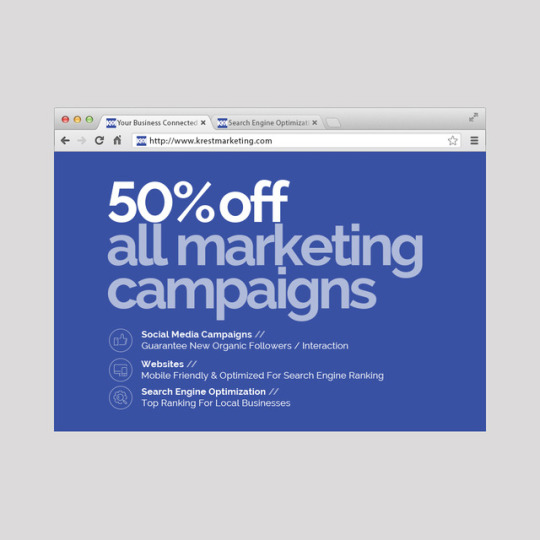
#smallbusinessmarketing#contentwriting#articlewriting#internetmarketing#huntingtonbeachseo#bestlocalseo#lagunabeachseo#socialmediamarketing#digitalmarketing#blogpower
2 notes
·
View notes
Photo
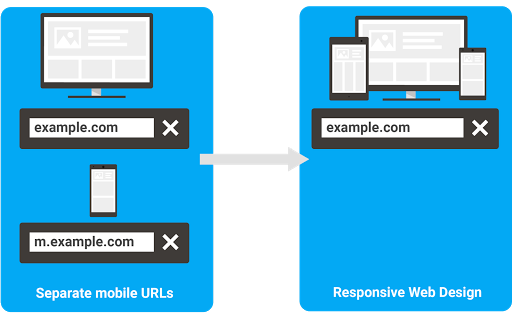
How to move from m-dot URLs to responsive site
With more sites moving towards responsive web design, many webmasters have questions about migrating from separate mobile URLs , also frequently known as “m-dot URLs”, to using responsive web design . Here are some recommendations on how to move from separate urls to one responsive URL in a way that gives your sites the best chance of performing well on Google’s search results. Moving to responsive sites in a Googlebot-friendly way Once you have your responsive site ready, moving is something you can definitely do with just a bit of forethought. Considering your URLs stay the same for desktop version, all you have to do is to configure 301 redirects from the mobile URLs to the responsive web URLs. Here are the detailed steps: Get your responsive site ready Configure 301 redirects on the old mobile URLs to point to the responsive versions (the new pages). These redirects need to be done on a per-URL basis, individually from each mobile URLs to the responsive URLs. Remove any mobile-URL specific configuration your site might have, such as conditional redirects or a vary HTTP header. As a good practice, setup rel=canonical on the responsive URLs pointing to themselves (self-referential canonicals). If you’re currently using dynamic serving and want to move to responsive design, you don’t need to add or change any redirects. Some benefits for moving to responsive web design Moving to a responsive site should make maintenance and reporting much easier for you down the road. Aside from no longer needing to manage separate URLs for all pages, it will also make it much easier to adopt practices and technologies such as hreflang for internationalization, AMP for speed, structured data for advanced search features and more. As always, if you need more help you can ask a question in our webmaster forum . Posted by Cherry Prommawin, Webmaster Relations .blogimg img width: 100%; border: 0; margin: 0; padding: 10px 0 10px 0;
http://bit.ly/2eZjF0U
#seo #internetmarketing #huntingtonbeachseo #lagunabeachseo #newportbeachseo #leadgeneration #contentwriting #linkbuilding #digitalmarketing #articlewriting
#seo#internetmarketing#huntingtonbeachseo#lagunabeachseo#newportbeachseo#leadgeneration#contentwriting#linkbuilding#digitalmarketing#articlewriting
1 note
·
View note
Photo
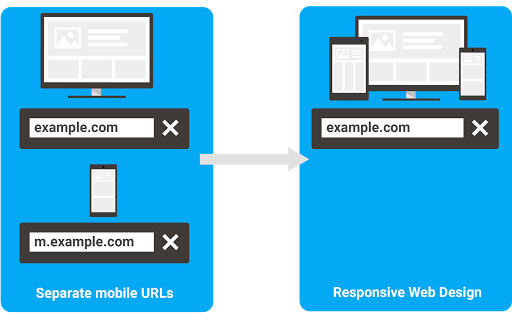
How to move from m-dot URLs to responsive site
With more sites moving towards responsive web design, many webmasters have questions about migrating from separate mobile URLs , also frequently known as “m-dot URLs”, to using responsive web design . Here are some recommendations on how to move from separate urls to one responsive URL in a way that gives your sites the best chance of performing well on Google’s search results. Moving to responsive sites in a Googlebot-friendly way Once you have your responsive site ready, moving is something you can definitely do with just a bit of forethought. Considering your URLs stay the same for desktop version, all you have to do is to configure 301 redirects from the mobile URLs to the responsive web URLs. Here are the detailed steps: Get your responsive site ready Configure 301 redirects on the old mobile URLs to point to the responsive versions (the new pages). These redirects need to be done on a per-URL basis, individually from each mobile URLs to the responsive URLs. Remove any mobile-URL specific configuration your site might have, such as conditional redirects or a vary HTTP header. As a good practice, setup rel=canonical on the responsive URLs pointing to themselves (self-referential canonicals). If you’re currently using dynamic serving and want to move to responsive design, you don’t need to add or change any redirects. Some benefits for moving to responsive web design Moving to a responsive site should make maintenance and reporting much easier for you down the road. Aside from no longer needing to manage separate URLs for all pages, it will also make it much easier to adopt practices and technologies such as hreflang for internationalization, AMP for speed, structured data for advanced search features and more. As always, if you need more help you can ask a question in our webmaster forum . Posted by Cherry Prommawin, Webmaster Relations .blogimg img width: 100%; border: 0; margin: 0; padding: 10px 0 10px 0;
http://bit.ly/2eZjF0U
#socialmediamarketing #articlewriting #seo #leadgeneration #internetmarketing #digitalmarketing #contentwriting #huntingtonbeachseo #linkbuilding #lagunabeachseo
#socialmediamarketing#articlewriting#seo#leadgeneration#internetmarketing#digitalmarketing#contentwriting#huntingtonbeachseo#linkbuilding#lagunabeachseo
1 note
·
View note